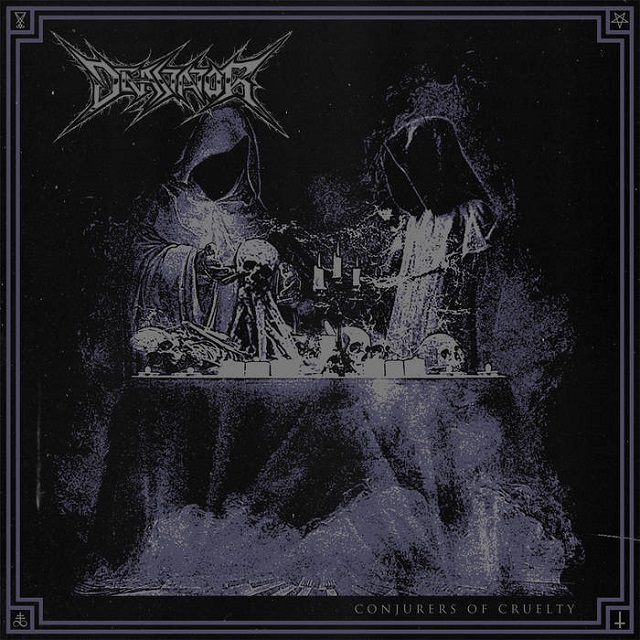
Whenever anyone thinks of any genres that have female musicians, they often think of pop. Whilst it’s great to see women dominating the music charts, there is a multitude of fantastic women showcasing their talents in rock and metal. For this year’s International Women’s Day, we at Distorted Sound Magazine are highlighting the top five women who are influential to the scene in 2024, as well as one who is leading the next generation of rock music.
SCENE QUEEN
 Scene Queen live @ O2 Academy Islington, London. Photo Credit: Karolina Janikunaite
Scene Queen live @ O2 Academy Islington, London. Photo Credit: Karolina JanikunaiteWhenever anyone thinks of heavy metal fans, the stereotype is men and women with long hair, piercings and dressed in all black. But there are also hyper-feminine people who love metal as well. SCENE QUEEN – real name Hannah Collins – is one of them. Ever since her 2020 debut single Aren’t You Tired? was released, she has been carving out her own path, combining heavy metal, pop and rap to create the genre of Bimbocore. Her unapologetic hyperfeminine show outfits are bright and colourful, complete with sequins, feather boas and a lot of pink, and her concerts embrace being a safe space for anyone who feels like an outsider, SCENE QUEEN is changing the way that people perceive the alternative rock scene.
Whilst some might raise their eyebrows at the hypersexual lyrics, it is empowering to see a woman reclaim her sexuality with outrageously funny and over-the-top lyrics. But there is also a serious side to her music. In 2023, she sent shockwaves throughout the rock music scene with her single 18+, which was about calling out musicians who abuse their power. Then there is Pink Push-Up Bra, which deals with women getting justice for sexual assault. With her debut album, titled Hot Singles in Your Area, due out this spring, there are plenty of more opportunities for SCENE QUEEN to continue to challenge assumptions about what alternative music looks and sounds like.
HALSEY
 Photo Credit: Joseph Okpako/ WireImage
Photo Credit: Joseph Okpako/ WireImageShe might be best known for her indie-pop songs, but on her fourth album, 2021’s If I Can’t Have Love, I Want Power, HALSEY – real name Ashley Frangipane – teamed up with Trent Reznor and Atticus Ross (NINE INCH NAILS) to create a raw and powerful industrial rock concept album about the horrors and joys of pregnancy and childbirth, which was written and recorded whilst HALSEY was pregnant with her first child. However, this wasn’t the first time that HALSEY delved into the rock scene. There’s the pop-punk song 3AM on her 2020 album Manic, the stadium rock of 2019 single Nightmare, and the fast-paced metal of 2020 single Experiment On Me, which was produced by Oli Sykes and Jordan Fish (BRING ME THE HORIZON).
As with all the genres that she has played throughout her career, she has made industrial rock her home. Furthermore, she has raised awareness around endometriosis, which she has been open about having since her diagnosis in 2016 and been open about the long and difficult process that she went through to get diagnosed. This showcases a vulnerability that most musicians in the alternative scene have only just started to showcase in the past few years. HALSEY‘s music has also been the soundtrack to many young women and girls since the mid-to-late 2010s. Throughout her career, her ever-changing music and fashion style has shown young women that they do not have to fit into a box that society has built for them.
BEX

BEX is one of the newer artists on the list, but she is already she is already being hailed as punk’s new daughter, and with the release of her EP, Scum, in 2023, she is taking the music world by storm. Whether it is exposing misogynistic men on the song Hazmat Suit (My Ass), which was written in response to a man she knew at university who was trying to persuade her to go clubbing at a club where there had been frequent reports of girls having their drinks spiked, or using the metaphor of a spider to prove that the smallest thing to some people are the biggest fears for others in the song SPYD4 K1NG, BEX’s lyrics are raw and complex, but – when you dig under the surface, you’ll find an important message about issues that are not spoken about enough.
BEX’s take on punk music is unique as it is very bass heavy. In fact, there are two basses in her songs. After she became popular on Instagram and TikTok for playing the bass, her and her bassist Josh decided to both play the bass. She also creates her own clothing that she wears when playing concerts, which she thought was something that all musicians do. With her unique style, sound and passion for music, BEX is one of the scene’s brightest new stars.
Ren Aldridge – PETROL GIRLS
 Petrol Girls live @ The Deaf Institute, Manchester. Photo Credit: Polarise
Petrol Girls live @ The Deaf Institute, Manchester. Photo Credit: PolariseOn their 2022 album Baby, UK punk band PETROL GIRLS used some sardonic humour to bring serious issues to light. They covered every topic from abortion with the tongue-in-cheek Baby, I Had an Abortion (with the proceeds going to the charity Abortions Without Boarders), to the seriousness and horror of femicide – which is the killing of women and girls based on their gender on Fight For Our Lives. They are led by vocalist Ren Aldridge, who also campaigns for issues that affect women; such as attending protests in Austria, where she lives, and giving a TED Talk about how to stop violence against women and girls.
It is her willingness to speak up about issues that make her one of the best women in punk today. She wants to normalise abortion as just another part of healthcare. However, PETROL GIRLS talking about feminism isn’t a recent thing. On their 2019 album Cut & Stitch, there is the song, Big Mouth, which is about society says that how women and other minorities should be seen and not heard. Music can change the people who listen to it, and by talking about issues that society tend to shy away from, PETROL GIRLS – and Aldridge herself – are inspiring people to educate themselves further on the issues that women face today and creating a community of passionate fans.
April Kae – FEVER 333
 Photo Credit: Fender
Photo Credit: FenderFEVER 333 have been changing the punk scene ever since they debuted onto the scene in 2017. They have spoken out against racism, imperialism, and fascism. Whilst April Kae has only been a member of the band since 2023, she is not only an incredible bass player who went viral for covering Up by American rapper CARDI B, but also a passionate singer, songwriter. Her distinctive bass style is edgy and has a funk-pop sound. It’s because of this that she has been on the cover of magazines such as Bass Player and Guitar Girl.
Also known for her activism, she has been involved in raising money for displaced people after Hurricane Katarina, as well as being in a band/art collective called IMANIGOLD with her younger sister Nikki, which is currently on a break. Her versatility is commendable. Kae also teaches people how to play the bass from beginner to expert level, in accessible and easy to understand videos. Bass guitars are an overlooked instrument when it cones to music, but a great bass can make or break a song. Thankfully for FEVER 333, they have Kae, who is one of the greatest bassists who is making a name for herself in the scene.
One To Watch: CODY FROST
 Photo Credit: Dev Place Photos
Photo Credit: Dev Place PhotosCODY FROST might be known for featuring on The Voice UK, as well as the fantastic ENTER SHIKARI single Bull, but she is a brilliant singer in her own right. Her mix of rave-punk is causing a stir across the music scene with EPs It’s Not Real (2021) and Teeth (2022). However, it is her single WOT? that has tipped her into the public’s consciousness. She participated as a contestant on The Voice UK back in 2016 and got through to the finals.
However, when the hype died down, she took some time away from the spotlight to craft her sound. In 2021, she released her debut single Verbal Warnings, and has expanded her sound from there. Her energetic live shows are infectious, and her refusal to fit into a box is extremely admirable. Her music covers indie rock, rave, punk, and everything in between. She has played at festivals such as 2000trees and has appeared on the new albums by BURY TOMORROW and YOU ME AT SIX, adding some elegant vocals that instantly captivate the listener. With new music due out this year, CODY FROST is set to be one of the most exciting new musicians in 2024.
These are just some of the most influential and fantastic women that are in the rock scene at the moment. There are so many women in the scene, including crew members, photographers, journalists, and many more musicians who constantly inspire us every day. Whilst the alternative music scene often seems like a boys club at times, it is brilliant that there has been a significant rise in championing the brilliant women who constantly inspire us every day, and – in turn – inspire more girls and women to write songs, pick up an instrument or start a career in the music industry. Long may it continue.





















 Jinjer. Crédito: Lina Glasir
Jinjer. Crédito: Lina Glasir

 Photo Credit: Alex Solca
Photo Credit: Alex Solca Photo Credit: Alex Solca
Photo Credit: Alex Solca
